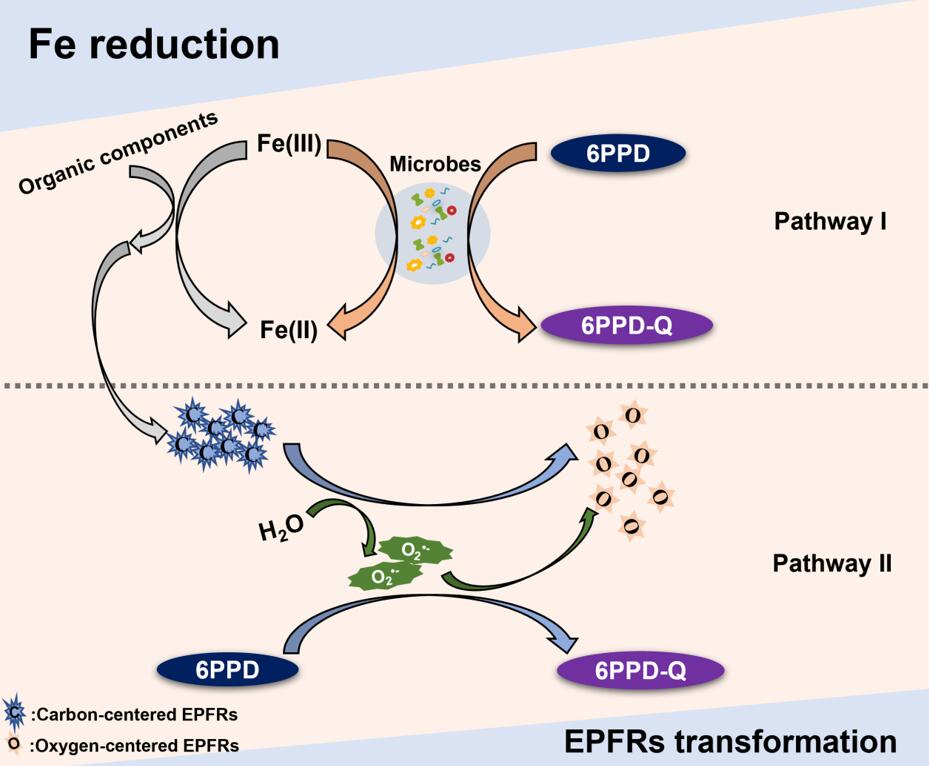Rapid urbanization drives increased emission of tire wear particles (TWPs) and the contamination of a transformation product derived from tire antioxidant, termed as N-(1,3-dimethylbutyl)-N′-phenyl-p-phenylenediamine-quinone (6PPD-Q), with adverse implications for terrestrial ecosystems and human health. However, whether and how 6PPD-Q could be formed during the aging of TWPs in soils remains poorly understood.
In a study recently published in Environmental Science & Technology (2023, 57(14): 5978–5987), a research team led by Prof. ZHU Yong-Guan and AP LI Gang from the Institute of Urban Environment, the Chinese Academy of Sciences reported that the iron (Fe) reduction and TWP-harbored environmentally persistent free radicals (EPFRs) can facilitate 6PPD-Q formation during TWP aging processes in flooded soils.
The researchers observed an enhanced accumulation of 6PPD-Q in both sterilized and non-sterilized anaerobic flooded conditions during the 60- day TWP aging processes in soils, with a ~3.8-fold higher accumulation of 6PPD-Q in flooded soils than wet soils.
The researchers found a good correlation between the reduction from Fe(III) to Fe(II) and the transformation from 6PPD to 6PPD-Q under anaerobic conditions, which disappeared under the same conditions but with sterilization as pretreatment. The microbial iron reduction coupling 6PPD degradation was further verified as a plausible pathway for the biotic 6PPD-Q formation in flooded soils.
Combining with the uses of different reactive free radicals (ROS) quenchers, the researchers further pointed out that anaerobic flooded conditions were conducive to the EPFRs-induced formation of superoxide radicals (O2.-), which can further drive the abiotic formation of 6PPD-Q.
This work provides a plausible explanation for the occurrence of 6PPD-Q in anaerobic environments, such as flooded soils, sediments, and natural waters, and would be helpful to expand our understanding of the potential risk of TWPs to soil health.

Figure 1. The mechanisms on the Fe reduction- and EPFRs transformation- dependent 6PPD-Q formation during TWP aging processes in flooded soils. Image by XU Qiao et al.
Contact: LI Gang
Institute of Urban Environment, Chinese Academy of Sciences
E-mail: gli@iue.ac.cn